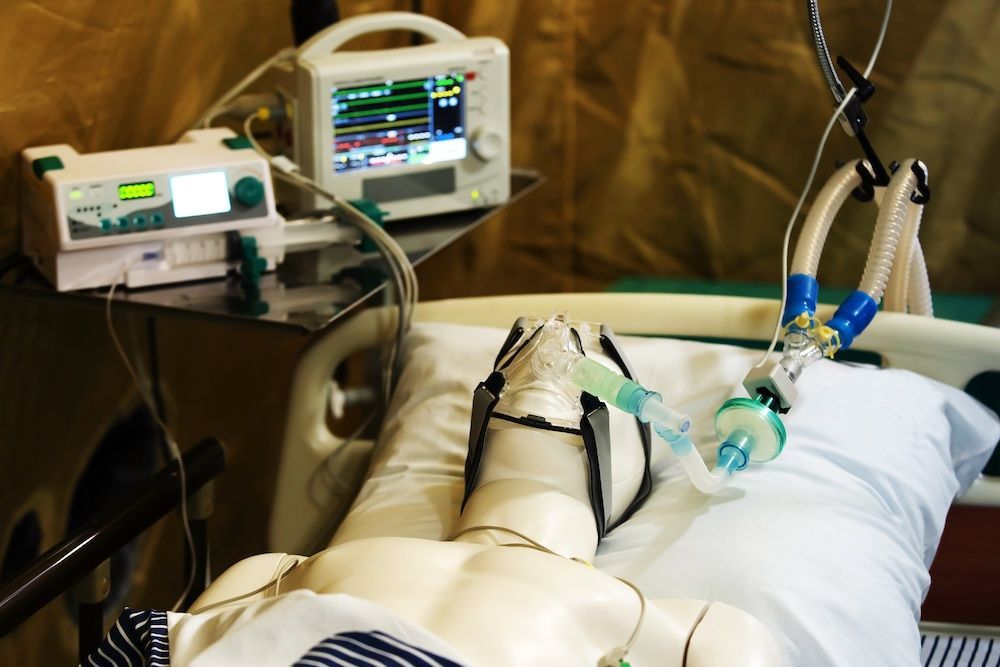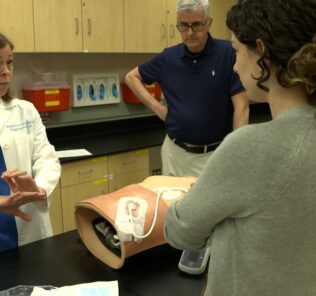How to Run a Clinical Simulation Program Without a Simulation Center
Healthcare simulation centers internationally operate in a variety of environments and receive finances through many different financial streams. As a clinical simulation program without a home, there can be sentiments of feeling less like a stellar program without walls to operate in a state-of-the-art center. Just because a healthcare simulation team operates without a simulation center does not mean that the clinical simulation program cannot be equally or more effective in outcomes compared to others with a state-of-the-art location.
The article written by Erin Carn-Bennett will explore lessons from her own experience as a nurse educator for the Douglas Starship Simulation program in New Zealand for the past four years. Currently, the team operates from a very small shared office space for nine employees as their healthcare simulation center is under construction. The team runs a highly efficient, respected, and successful program with minimal space and storage currently. The limited space requires simulations in clinical spaces and other simulation centers. Operations of a successful clinical simulation program without a simulation center can be more successful with visibility, accessibility, and approachability.
Healthcare simulation team members are highly creative and motivated individuals. Simulation is only limited by one’s imagination. An effective clinical simulation program without a simulation center often requires even more innovation, communication, and network capabilities to get clinical simulation-based education completed with exceptional results. Opportunistic and strategic network skills should be employed with staff members from all areas of the organization.
Sponsored Content:
Opportunistic network skills may be used in areas such as the coffee line queue where discussions can be more casual. Some of the best work can be achieved in a coffee queue to get to know the current statuses of departments and offers of future clinical simulations or more strategic meet-ups. It is important to always have a way to take notes and write down any opportunistic agenda items. Occasionally these notes can bring awareness when an area is under particular strain and that they may need a break from clinical simulation education for a while.
Do not underestimate the impact of demonstration of care for staff’s well-being across organizations by a genuine interest in the status of the area clinically and culturally. Clinical simulation staff can use their vast array of communication skills in these situations. Deep listening and clinical simulation debriefing skills are useful in crucial conversations around challenges in clinical areas for all hospital-based staff. The employment of such skills helps to build trust and psychological safety beyond clinical simulation programs and into organizational culture.
Strategic networking opportunities are also useful to plan ahead for clinical simulation-based education in the future. These exchanges can be tailored to suit individual organizations’ needs. Consider what groups of staff are currently offered clinical-based simulation education and what areas could be offered in the future when considering a strategic meet-up.
Such network opportunities may include the offer to meet nurse educator groups to see where clinical simulation-based education could dovetail into their annual education plans. If nurse educators feel comfortable to share their annual education plans they can advise what clinical simulation scenarios to design for individual areas throughout the organization. Regular periodic attendance at nurse educator meet-ups, as well as connections with individual educators, regularly will assist in the expansion of the nurse educator and clinical simulation team relationship.
Sponsored Content:
Links with the clinical director level across the organization are an incredibly important part in the construction of a strategic network for a simulation program without a simulation center. As the majority of clinical simulation-based education will occur in-situ in their departments, the relationship and connection are highly important. The meeting may occur through the clinical simulation program representatives’ attendance at a clinical director meeting. Another alternative option is to offer a meet-up led by the clinical simulation program for all clinical directors to attend voluntarily.
Knowledge of clinical governance structures and links to the executive level of the hospital is incredibly important for clinical simulation programs. These relationships can also be strengthened by the representation of clinical simulation team members in hospital clinical governance groups. The presence in clinical governance groups allows for clinical simulation programs to be aware of quality, health, and safety initiatives within the hospital. The presence of clinical simulation team members allows for clinical simulation-based education to be offered that is appropriate to tackle issues identified to meet the needs across the organization.
The medical simulation team and clinical staff need to know what resources are available locally where a clinical simulation course could be run. Although in-situ simulation is often considered the best form of clinical simulation, at times, it is not feasible for a variety of reasons. There may be other simulation centers in close vicinity to the organization worked within. Universities also often have clinical simulation centers within their nursing and medical schools that may be available for use for a fee.
There may be a clinical simulation center within the organization that is separate from the clinical simulation program, such as adult services in comparison to pediatrics. A requisition of what resources are within the organization and locally can assist when in-situ clinical simulation education is not possible. Connection with others in the clinical simulation field nearby can be hugely beneficial when operating a clinical simulation program.
When a nursing simulation center and in-situ clinical space are not available they do not need to be the only option to run a clinical-based simulation course. Creativity and innovation from clinical simulation team members can enable a lot of realism and fidelity even if the simulation is run in a non-clinical environment. A hospital bed or cot and oxygen and suction tubes attached to a large plastic card at the end of a bed with a manikin creates a higher than expected level of realism.
View the HealthySimulation.com LEARN CE/CME Platform WebinarImportant Considerations When Designing a New Simulation Centerto learn more!
A clinical simulation program will need to have the same equipment that will be used in the clinical setting. An example is the requirement for the same resuscitation equipment trolley, monitors, beds, etc. This equipment can be used in non-clinical environments to provide a realistic clinical simulation.
A highly effective clinical simulation program without a clinical simulation center is achievable with strategic plans. Visability, accessibility, and approachability within a clinical simulation program through human to human connections can send a clinical simulation program to heights not thought to be possible.
Learn More About In-Situ Simulation!
Erin Carn-Bennett is a Simulation Nurse Educator for the Douglas Starship Simulation Programme in Auckland, New Zealand. Carn-Bennett has her Masters of Nursing and has an extensive nursing career within pediatric emergency and also nursing management. She is passionate about debriefing and all things simulation. Carn-Bennett is a member of the IPSS board of directors. Carn-Bennett is the lead host of the podcast Sim Nurse NZ.
Sponsored Content:

















